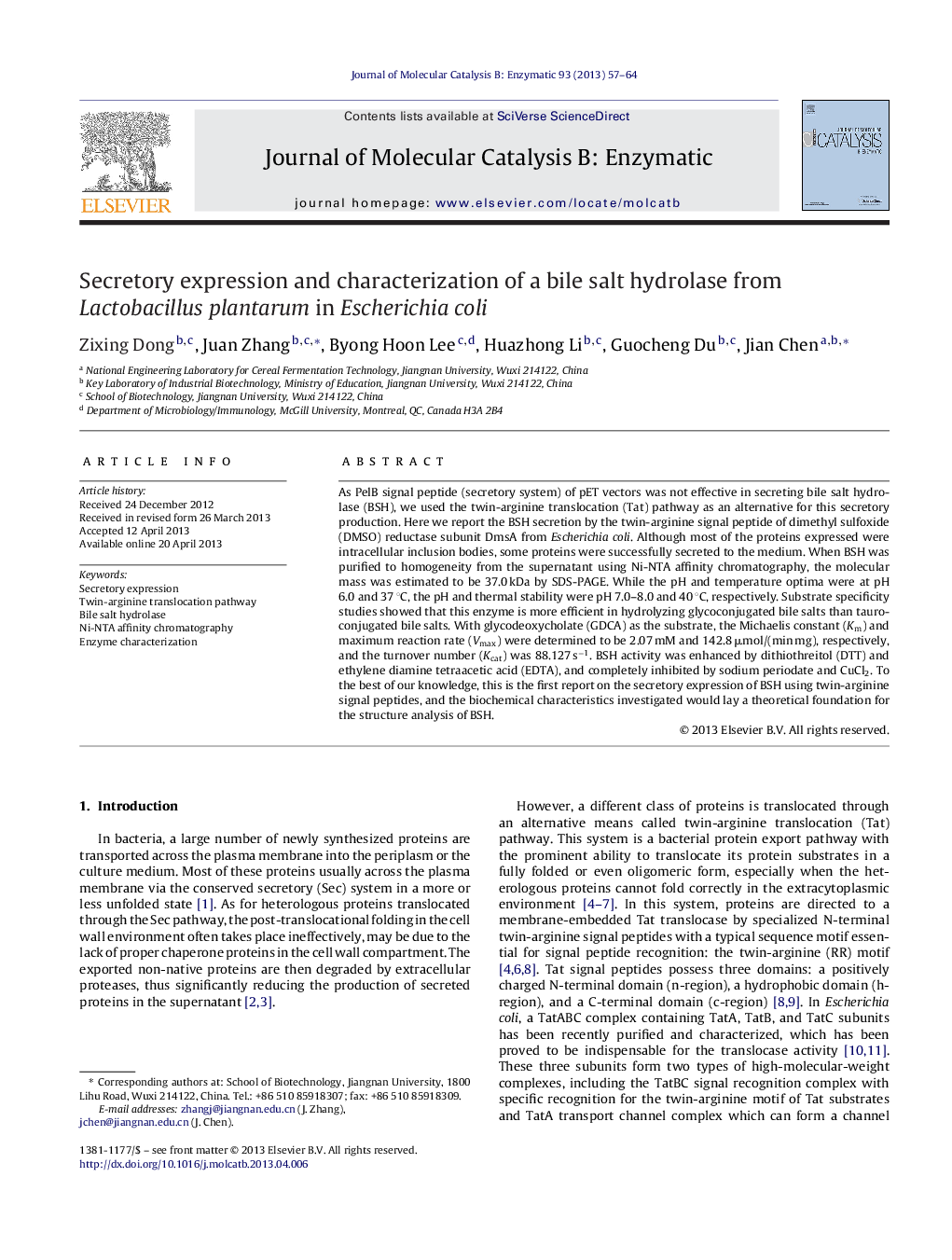| Article ID | Journal | Published Year | Pages | File Type |
|---|---|---|---|---|
| 69577 | Journal of Molecular Catalysis B: Enzymatic | 2013 | 8 Pages |
•For the first time, bile salt hydrolase was successfully exported to the medium.•The twin-arginine signal peptide from E. coli was used for the secretory expression.•Bile salt hydrolase from the supernatant was purified by affinity chromatography.•Some biochemical characteristics of the purified enzyme were investigated.•This provides a theoretical basis for the structure analysis of bile salt hydrolase.
As PelB signal peptide (secretory system) of pET vectors was not effective in secreting bile salt hydrolase (BSH), we used the twin-arginine translocation (Tat) pathway as an alternative for this secretory production. Here we report the BSH secretion by the twin-arginine signal peptide of dimethyl sulfoxide (DMSO) reductase subunit DmsA from Escherichia coli. Although most of the proteins expressed were intracellular inclusion bodies, some proteins were successfully secreted to the medium. When BSH was purified to homogeneity from the supernatant using Ni-NTA affinity chromatography, the molecular mass was estimated to be 37.0 kDa by SDS-PAGE. While the pH and temperature optima were at pH 6.0 and 37 °C, the pH and thermal stability were pH 7.0–8.0 and 40 °C, respectively. Substrate specificity studies showed that this enzyme is more efficient in hydrolyzing glycoconjugated bile salts than tauroconjugated bile salts. With glycodeoxycholate (GDCA) as the substrate, the Michaelis constant (Km) and maximum reaction rate (Vmax) were determined to be 2.07 mM and 142.8 μmol/(min mg), respectively, and the turnover number (Kcat) was 88.127 s−1. BSH activity was enhanced by dithiothreitol (DTT) and ethylene diamine tetraacetic acid (EDTA), and completely inhibited by sodium periodate and CuCl2. To the best of our knowledge, this is the first report on the secretory expression of BSH using twin-arginine signal peptides, and the biochemical characteristics investigated would lay a theoretical foundation for the structure analysis of BSH.
Graphical abstractFigure optionsDownload full-size imageDownload as PowerPoint slide
